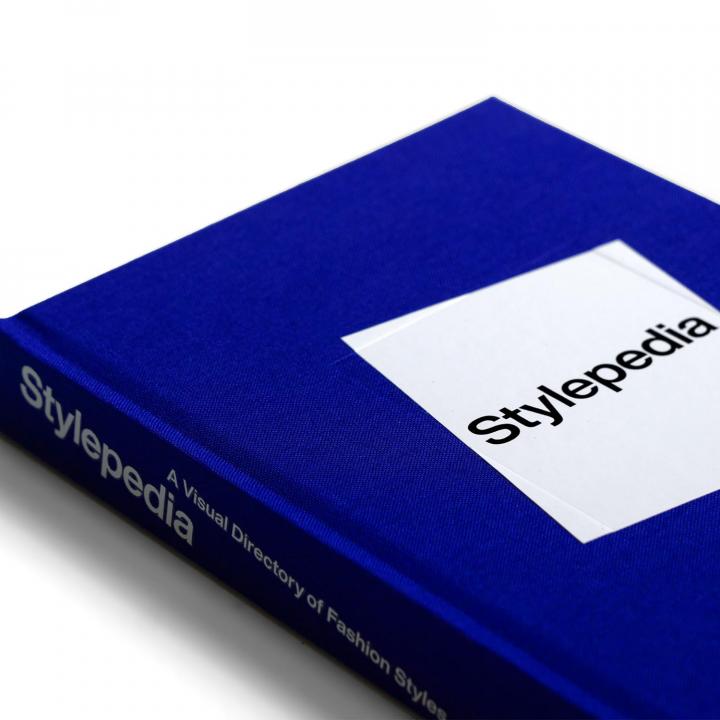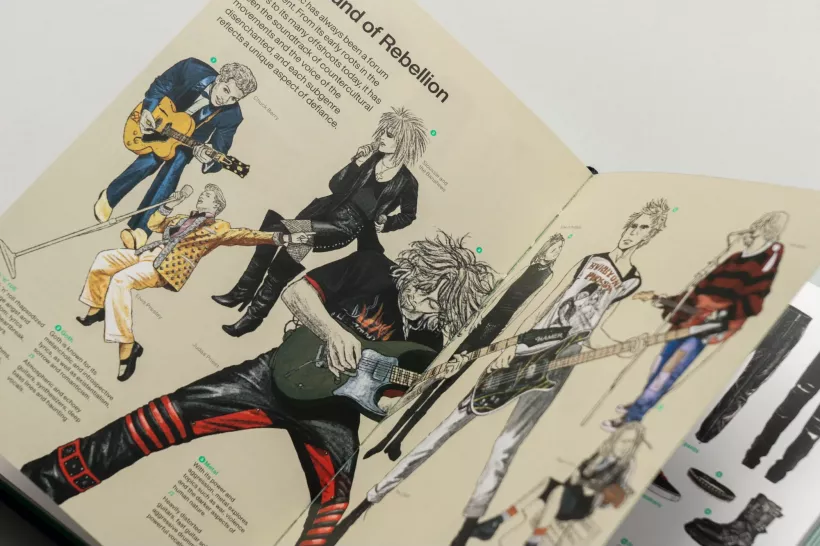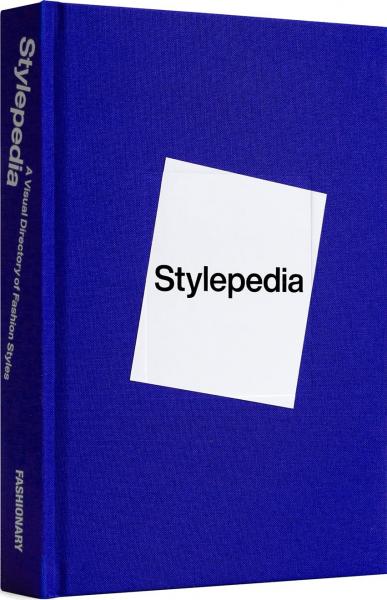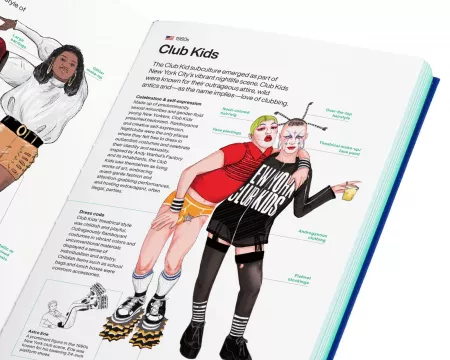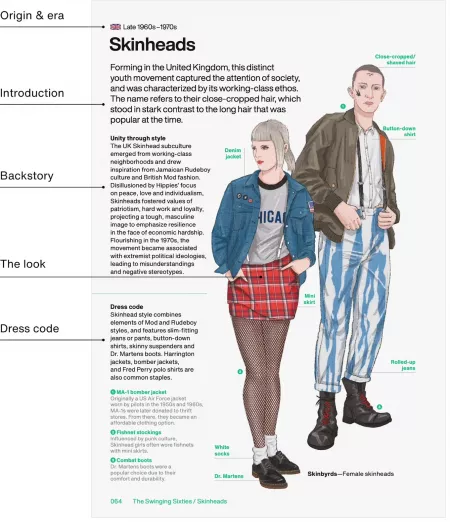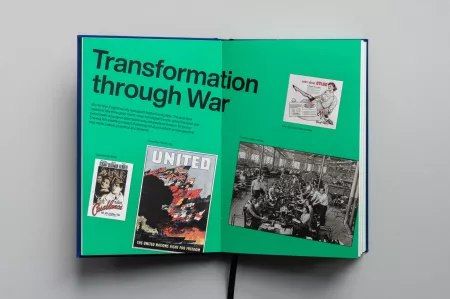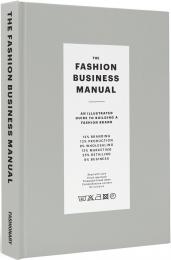Повний ілюстрований путівник по стилістичних течіях та модній субкультурі 1900-х – 2020-х років
Stylepedia розкриває глобальні стилі, досліджуючи їх походження, відмінні риси та культурні та історичні контексти, які їх сформували. Від історичних тенденцій до останніх подій у соціальних мережах, це ваш важливий путівник, який надає знання та натхнення, необхідні для розуміння суті різних стилів.
Stylepedia допомагає дизайнерам краще зрозуміти стиль і полегшує створення значущого дизайну. Він слугує довідником різноманітних стилів для стилістів, забезпечує короткий виклад історії моди для студентів моди та представляє глобальну панораму модної субкультури для всіх читачів.
З основних трендів:
Книга розглядає ключові тенденції, які визначили світову моду, починаючи від флеперів 20-х років, New Look, стилів Ліги Плюща, хіп-хоп культури до епохи Y2K. Він пропонує повне розуміння еволюції моди за останнє століття.
Для орендодавця відомої субкультури:
Книга розповідає про маловідомі субкультури, які, тим не менш, сформували течії еволюції моди. Від Pachucos і Leathermen до Bogans, Takenoko Zoku, Sapeurs і Riot Grrrl, це допомагає виявити прихованих впливових факторів стилю.
Розділ 1 - Сучасна епоха
Початок 20 століття, період швидкої модернізації та соціальних змін, був відзначений процвітанням і оптимізмом. Незважаючи на економічні труднощі Великої депресії, такі культурні віхи, як розквіт джазу, виборче право для жінок і золота ера Голлівуду, пропонували проблиски надії та інновації серед труднощів.
Розділ 2 – Трансформація через війну
Друга світова війна істотно змінила моду і стиль. Практичні потреби воєнного часу породили нові, функціональні тенденції, тоді як післявоєнний період ознаменувався сплеском альтернативних субкультур і поверненням до розкоші. Ця епоха залишила тривалий вплив, сприяючи формуванню майбутньої моди, яка була б більш невимушеною, практичною та різноманітною.
Розділ 3 - Сила підлітків
Післявоєнне процвітання породило особливу культуру підлітків, які прагнули відрізнятися від своїх батьків. Під впливом масового споживання та розваг вони почали експериментувати з модою та субкультурами як формою бунту та пошуку ідентичності. Ця ключова зміна позиціонує підлітків як впливових культурних каталізаторів, які назавжди змінюють ландшафти моди та суспільства.
Розділ 4. Свінгові шістдесяті
1960-ті роки були епохою оптимізму, орієнтованої на молодь, що керувалася технологічним прогресом та економічним процвітанням. Мистецтво та мода відображали цей сміливий і грайливий дух, слугуючи значними відображеннями цієї динамічної епохи. Водночас зростання кількості добре освіченої молоді стало трансформаційною силою суспільства. Їхня підвищена соціальна свідомість проклала шлях до значних політичних рухів.
Розділ 5. Розквіт революції
Серед бурхливої війни у В’єтнамі та руху за громадянські права «сила квітів» стала потужним символом миру, єдності та різноманітності. Він переплітає моду та соціально-політичну пропаганду, відкидаючи загальноприйняті норми та відстоюючи інклюзивність. Поєднуючи стиль із прагненнями громадянських прав, рух каталізував суспільні зрушення в бік більшої справедливості та різноманітності.
Розділ 6. Неонова ера
Неонова ера, синонім 1980-х, характеризувалася яскравою, надмірною модою, що відображала матеріалізм десятиліття та зростання економічної впевненості. У цей період, позначений мантрою «жадібність — це добре», спостерігався вибух індивідуалістичних проявів у моді та субкультурах, що втілювало культурні зрушення епохи та економічне зростання.
Розділ 7. Альтернатива стає мейнстрімом
Відзначені закінченням холодної війни та початком цифрової ери, 1990-ті роки відкрили кардинальні зміни в моді. У цю епоху спостерігався зсув у бік альтернативних стилів, масове прийняття тенденцій, що підживлювалися культурою знаменитостей, а також поширена інтеграція вуличної моди, що відображає динамічні соціокультурні зміни десятиліття.
Розділ 8. Ера доткомов
Відзначені оптимізмом нового тисячоліття, 2000-ті принесли грайливий, експериментальний зсув у моді та субкультурі. Зростання Інтернету демократизувало моду, сприяючи обміну стилями та трендами та роблячи їх миттєво доступними через онлайн-платформи та соціальні мережі. Результатом стала справді глобальна модна культура.
Розділ 9 - Flash Fashion
В еру смартфонів і соціальних медіа тренди стали короткочасними «вібраціями», а мікротренди з’явилися швидко, більше не диктуючись великими брендами, а формувалися взаємопов’язаною онлайн-спільнотою. Цей зсув, що відбиває швидкий технологічний прогрес, ознаменував світанок справжньої спільної моди.
Широке покриття
Ця книга заглиблюється в сферу стилю та моди, досліджуючи, як вони формуються та формуються соціальними, політичними та економічними контекстами, в яких вони існують. Він досліджує культові стилі та їхнє походження та характеристики, відстежуючи нитки, які з’єднують їх із ширшими культурними наративами.
Розуміння історій, що стоять за стилями
Стиль виходить за межі простої візуальної привабливості; він представляє свідомий вибір, який роблять люди, щоб виразити себе у своїй взаємодії зі світом. Наша мета — надати вам ключові події, пов’язані з цими стилями, для збагаченого розуміння.
Глибоке занурення в кожен стиль:
Щоб по-справжньому відобразити стиль, вам потрібна повна картина: його історія, ключові речі, впливові особи, а також зачіски та макіяж, які його визначили. Не кажучи вже про казки, які роблять кожну культуру унікальною. У нашій книзі все це зібрано в чистому, легкому для сприйняття макеті. Пориньте та швидко станьте експертом у будь-якому стилі та його культурі, усе у вас під рукою.
Понад 1200 ілюстрацій:
Завдяки детальним ілюстраціям книга забезпечує миттєве розуміння різноманітних стилів і субкультур. Ви дізнаєтесь про стилі та субкультури весело та легко.


